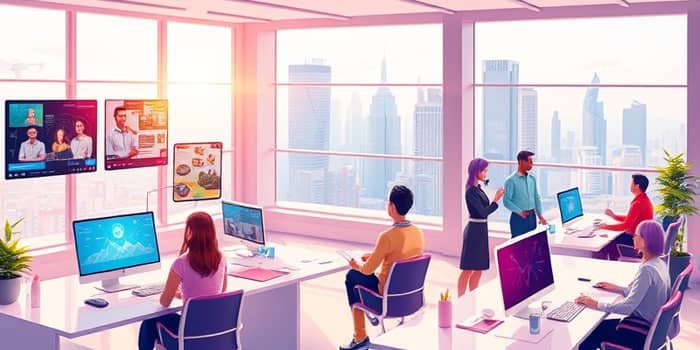
As organizations adapt to shifting norms, remote work participation and hybrid models are redefining professional landscapes. Employers and employees alike face profound changes in productivity, real estate, technology adoption, and well-being priorities. This article explores the quantitative workforce data, core trends, and market consequences steering the future of work.
Understanding these dynamics is essential for business leaders, HR professionals, investors, and policymakers. By examining data from 2025, we reveal insights into workforce behavior, sectoral shifts, and strategies for sustainable growth.
In the United States, roughly 22–23% of the workforce—32.6 to 36.2 million people—now operates fully or partially from home. Globally, 83% of employees prefer a hybrid arrangement that blends in-office collaboration with remote flexibility. Yet only 16% of companies are wholly remote, while 44% require full onsite attendance.
Studies show that remote-only workers log 51 more productive minutes per day compared to hybrid or office-based peers. This edge in efficiency is driving demand: remote and hybrid roles attract 60% of applications but represent just 20% of job postings. As a result, office vacancy rates in the U.S. have climbed to 19.9%, exceeding 25% in major technology hubs like Austin.
Forecasts project that by 2030, 22% of current jobs will be transformed: 14% created, 8% eliminated, yielding a net gain of 7% or 78 million positions worldwide. High-growth areas include the care economy, education, technology, and green energy.
Conversely, routine clerical and easily automated tasks face steep declines. Companies in professional services, technology, and manufacturing lead remote job growth, while luxury goods, coaching, and consumer electronics see notable increases.
Technology adoption distinguishes market winners. In a recent WEF survey, 86% of firms cited AI and information processing as critical, while 58% prioritized robotics and automation. Energy generation and storage technologies received 38% focus, reflecting sustainability’s rising importance.
“Nudgetech” solutions leverage subtle AI prompts to enhance communication across diverse teams, ensuring DEI efforts translate into everyday practice. As automation reshapes roles, continuous learning platforms become vital for workforce resilience.
Leaders must build agility in organizational structure to keep pace with rapid change. CHROs and CEOs are realigning functions around cross-disciplinary teams, flattening hierarchies, and embedding rapid decision cycles.
Such initiatives create resilient cultures capable of embracing uncertainty and driving innovation.
Beyond remote access, organizations are reimagining physical spaces as hubs for connection and transformation. Companies now design immersive, multi-sensory work environments that blend natural elements, modular layouts, and technology for enhanced creativity and well-being.
Investments focus on areas that support personal and professional growth—quiet zones for deep work, collaboration pods with advanced audio-visual systems, and wellness rooms offering mental health resources. These environments reflect a shift from surface-level aesthetics to purpose-driven design.
Remote and hybrid models also deliver significant sustainability benefits. Reduced commuting lowers carbon emissions, easing urban congestion and driving new investment in digital infrastructure. Organizations save on utilities and facility costs, reallocating capital toward technology, learning programs, and employee support services.
The financial and environmental payoffs reinforce the business case for flexible work arrangements, making them central to long-term planning.
To thrive in this evolving landscape, stakeholders should consider the following recommendations:
By adopting these approaches, organizations and individuals can harness market shifts, achieve sustainable growth, and foster a workplace culture that thrives on innovation and human potential.
The future of work is not a distant vision but a rapidly unfolding reality. Embracing change with strategic foresight, technological dexterity, and a human-centric ethos will define successful enterprises in the years to come.
References













